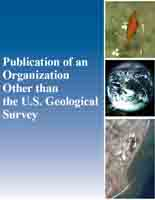Eastern Indigo snake (Drymarchon couperi) shelter site use In peninsular Florida, USA, and implicatIons for habItat conservatIon
Links
- More information: Publisher Index Page (xml)
- Download citation as: RIS | Dublin Core
Abstract
Shelters are critical for many species as protection from predators and extreme temperatures. Successful conservation of reptiles requires understanding both shelter site requirements and availability. The Eastern Indigo Snake (EIS; Drymarchon couperi) is endemic to the southeastern U.S. and is federally listed. Recovery has focused on maximizing unfragmented landscapes, with less attention on fine-scale features such as shelter sites. In the northern EIS range, Gopher Tortoise (Gopherus polyphemus) burrows are used extensively for shelter. Although EIS in peninsular Florida often shelter in tortoise burrows, they also use other shelters where tortoise burrows are scarce or absent. Solely focusing EIS survey and management efforts where Gopher Tortoises are present may overlook occupied habitats and misallocate resources. We investigated the importance of different shelter sites in central Florida using data from radio-tracked EIS. We modeled the use of shelter categories as a function of sex, season, and habitat using Bayesian multinomial Generalized Linear Models. Results showed that EIS in peninsular Florida used Gopher Tortoise burrows across all seasons and habitats. Tortoise burrow use was highest in xeric habitats and lowest in mesic habitats where burrows are most and least abundant, respectively. There was less variability in shelter site use in disturbed habitats and flatwoods. Tortoise burrow use by EIS in the cool season across sexes and habitats in our study was much lower than in southern Georgia. Our results indicate that EIS are less dependent on Gopher Tortoise burrows in peninsular Florida and that suitable habitats with few or no tortoise burrows could still provide conservation value for EIS.
Study Area
| Publication type | Article |
|---|---|
| Publication Subtype | Journal Article |
| Title | Eastern Indigo snake (Drymarchon couperi) shelter site use In peninsular Florida, USA, and implicatIons for habItat conservatIon |
| Series title | Herpetological Conservation and Biology |
| Volume | 18 |
| Issue | 2 |
| Year Published | 2023 |
| Language | English |
| Publisher | Herpetological Conservation and Biology |
| Contributing office(s) | Coop Res Unit Seattle |
| Description | 12 p. |
| First page | 362 |
| Last page | 373 |
| Country | United States |
| State | Florida, Georgia |


